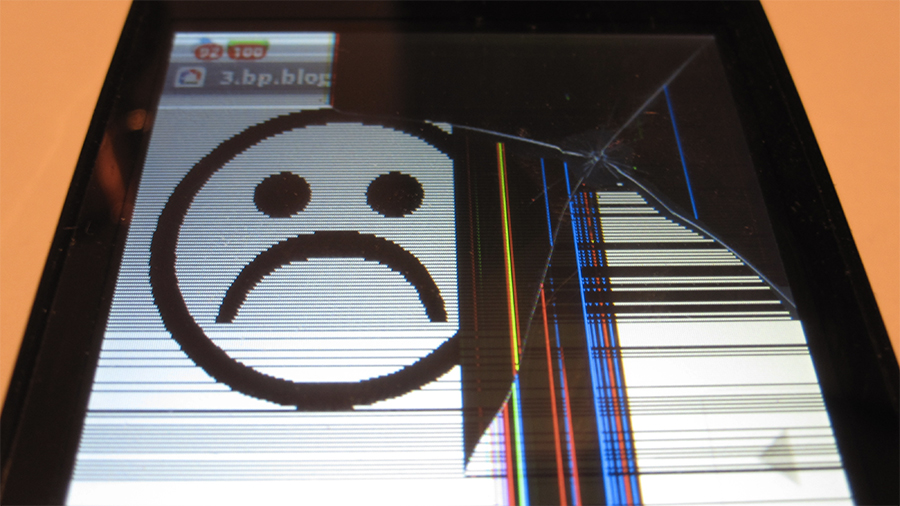What Can You Do If Your Mobile Carrier Sends You An Update That Breaks Your Phone?
Phones can be subject to a lot of failure. We load them up with a thousand competing apps, we stuff them with photos and videos and files, we carry them in our pockets and bags with us everywhere, and at a certain point it becomes inevitable that something, somewhere, will go wrong.
Physical damage is no fun, but at least is pretty straightforward. If you drop your phone in the toilet, run it over with your bike, or find your dog working those incisors on the screen, that’s on you. Every company sells an extended warranty option — basically, an insurance gamble. If you make it to upgrade time without incident, extended warranties are a waste. But if you skip one and have trouble, the penalty is paying out of pocket for a new device. So it goes.
But what about the damage outside of your control?
Nearly all devices are subject to system updates that your wireless carrier or device manufacturer pushes to you over the air. You can usually delay on installing them, but you can’t generally put it off forever. In general, those updates patch security flaws or improve and update functionality.
Sometimes, though, they break things instead. Readers write to us every so often with complaints about system updates disrupting major functions of their devices. Rarely, an update even bricks a device entirely, and someone is left with an expensive electronic paperweight. And so, readers have asked us, is there anything to be done other than dumping a few hundred dollars into a replacement for a broken item that was someone else’s fault?
The problem is lopsided, and affects Android users most heavily. Apple’s control-freak attitude toward every single element of the iOS chain is an advantage when it comes to pushing updates or fixes: everyone gets them, and you know where there’s an Apple Store near you to go to if it doesn’t work. They’re the ones responsible for a problem, and because they go to such lengths to operate a standard, uniform platform, major problems are more rare.
But the Android picture is more complicated. Users have three layers above them. There’s Google, who makes the core operating system; the device manufacturer, who makes the phone and may add an additional layer of Android modifications; and the wireless carrier (who, again, may add more software to the phone).
Among those three, it is the carrier who has responsibility for pushing updates to the end user — and who, in theory, needs to shoulder responsibility if those updates go awry.
We’ve seen some big examples of that responsibility recently. Samsung had a patch available within a few days when researchers announced a keyboard vulnerability that left 600 million Galaxy device owners vulnerable. Google also had an update ready within a few days for a security flaw that affected nearly a billion Android users. But neither Google nor Samsung is responsible for sending those updates out wirelessly to owners. Verizon, AT&T, T-Mobile, and Sprint (among others) are, and they do it (or don’t) in their own time and in their own ways.
So if an over-the-air (OTA) update from your carrier does have an adverse effect on your phone, what can you do? It depends on what kind of device you’ve got and how old it is.
If your device is wi-fi only, and does not go through a wireless carrier, you will need to contact the manufacturer directly. Google can’t replace or repair your tablet, but the manufacturer might. If your tablet is less than a year old, it’s still under warranty and customer service should be mostly amenable.
If it’s more than a year old, you might need to push gently. One reader wrote to Consumerist about a 2013 Asus Nexus 7 tablet that bricked after the Android 5 update this year; after “a polite email to Asus,” he told us, he escalated within customer service and was able to have his tablet repaired as if still under warranty.
If your mobile/3G/4G/LTE device is under a year old, it’s still under warranty. Although the warranty usually specifies physical defects, customer service for your carrier — either by phone or in a store — should be able to help you. The major carriers have their warranty and replacement programs, plus applicable customer service numbers, on their websites. Here’s the info for AT&T, Sprint, T-Mobile, and Verizon.
If your device is over a year old, unfortunately, you may be up a proverbial creek. The policies for almost every device and every carrier we checked stipulate a one-year warranty very clearly, after which you are basically on your own. (There are a very small handful of products with two-year warranties.)
We asked all four national carriers to clarify their policies about how they would help a customer if an update they pushed were to brick a device more than 12 months old. Neither AT&T, Sprint, nor Verizon provided responses.
T-Mobile, however, did. They told Consumerist that they work very closely with device manufacturers to develop and test updates before rolling them out to make sure that such cases are rare. They added that if an OTA update they pushed caused device performance issues, they would work closely with the customer to replace the device under the terms of the original purchase warranty.
Want more consumer news? Visit our parent organization, Consumer Reports, for the latest on scams, recalls, and other consumer issues.


